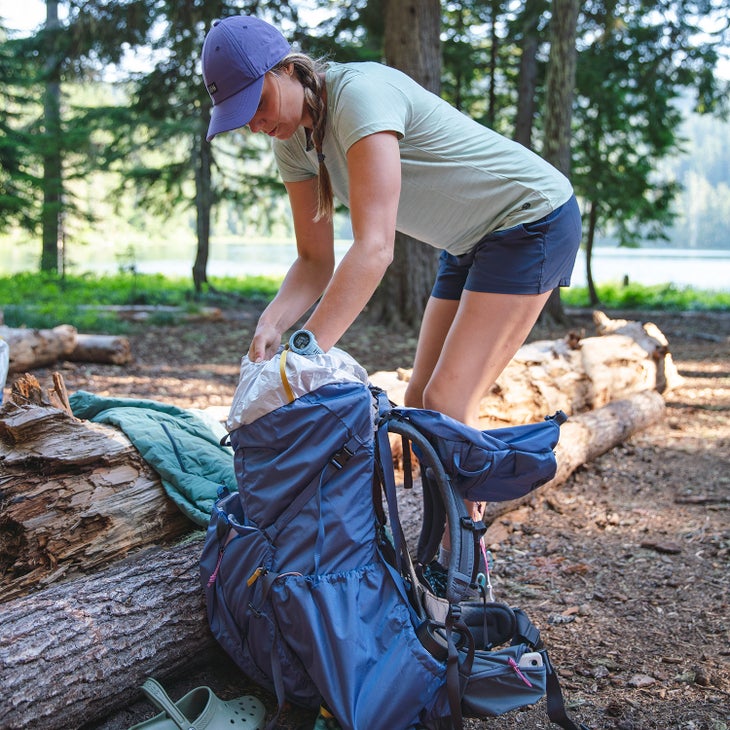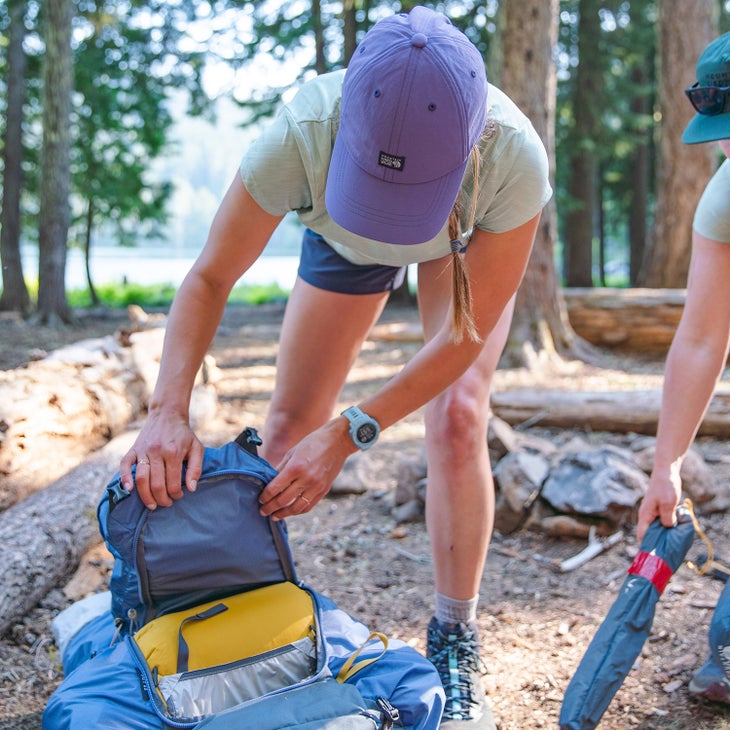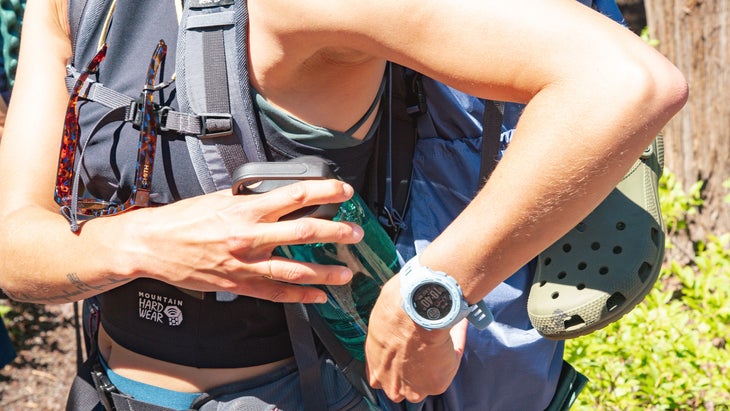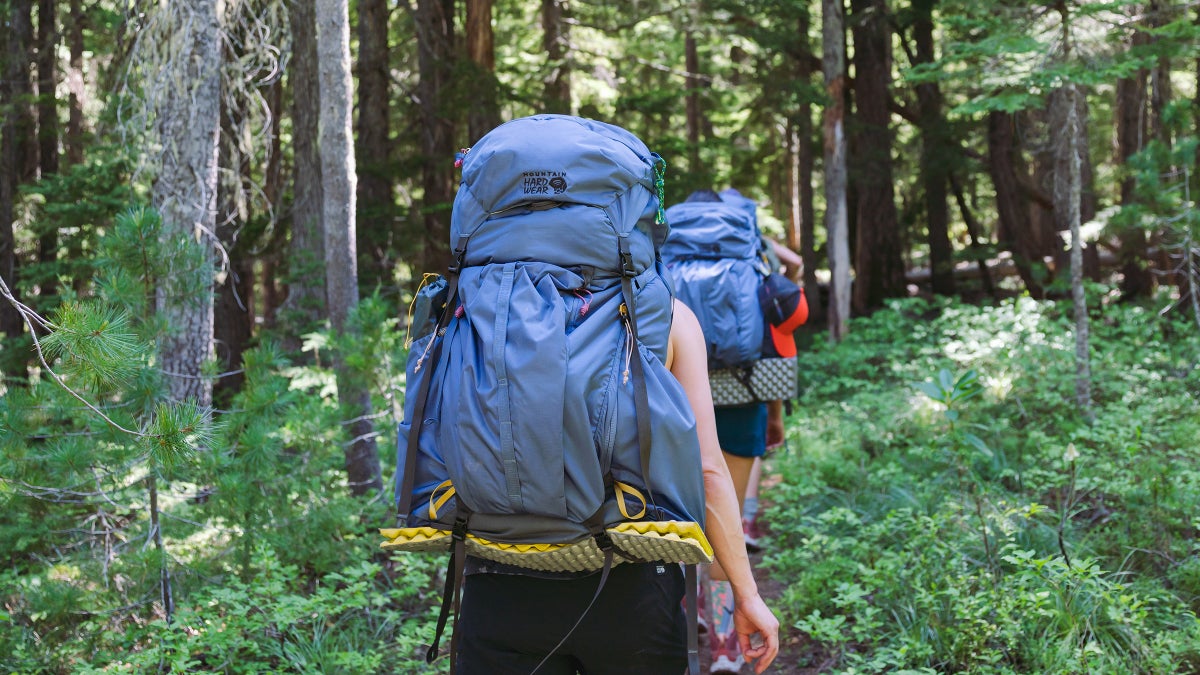No products in the cart.
Outdoor Adventure
I Tested Mountain Hardwear’s New PCT Pack on Its Namesake Trail
I really didn’t need another backpack when I got my hands on the new Mountain Hardwear Women’s PCT 65L ($300). (The pack also comes in a women’s 50-liter size and unisex 55- and 70-liter sizes.) In fact, my overflowing gear wall was practically throwing my other packs onto the floor in an act of rebellion. Despite the breadth of my quiver, when it came time to gear up for a backpacking trip, I would stare at my options, unconvinced that any would do the trick. Some were heavy and cumbersome yet never fit my equipment quite right; others were ultralight and made for a single purpose. Missing was the versatile hauler I needed to be my ride-or-die on sprawling scenic trails or rugged granite peaks.
Feeling choosier than Goldilocks herself, I decided to test the 4.2-pound, 65-liter PCT on a stretch of its namesake trail through the Mt. Hood National Forest, hoping it would put an end to my search for the just-right backpack. And after 21 miles and three hot, buggy days, this pack has become my go-to for multi-day treks through any type of mountain terrain.

I am not a hiker who is gentle on their gear. I believe that true durability allows you to be in the moment, rather than worrying about wear and tear. Not only were the PCT’s 120-denier ripstop body and 420-denier Cordura bottom lightweight, I was pleasantly surprised that they held up to getting snagged on downed trees and being haphazardly tossed on the ground at the end of the day. As an added bonus, everything but the base is made from 100 percent recycled materials. Mountain Hardwear even worked with its supplier to make cording out of scrap yarns to keep material out of landfill.
On the trail, I was impressed by the PCT’s sleek design and variety of compartments. It’s primarily a top-loading pack, but you can unzip the front panel to provide easy access to the bottom and middle of the main compartment. This front-loading design is something I’ve loved about my ski touring pack—I can quickly grab gear stashed at the bottom without having to totally unpack—but sorely missed in my backpacking haulers until now. It enables me to set up camp in a jiff while keeping everything else neatly(ish) in place.

The removable lid has two extremely roomy zippered pockets on top and one on the underside. When I filled them up with items I wanted handy, like a headlamp, fresh socks, hats, and a generous amount of snacks, I was surprised at their capacity. Another highlight was the front stash pocket, which was made of the same durable 210-denier ripstop material as the rest of the pack. This large, open compartment accommodated bulky items like a warm layer and camp meals without maxing out. I reserved the two equally spacious zippered compartments on the front of the stash pocket for dirty, stinky items that accumulated by days two and three.
Despite the abundance of spacious pockets on the main body of the pack, those on the hip belt were far too small to stash my phone. I had to stow it in one of the front zippered pockets that was inaccessible with the pack on, which made photographing the spectacular views of Mt. Hood a hassle.
One feature I didn’t expect to appreciate so much was the two side stretch pockets that were each big enough to stash a full-sized Nalgene plus a Croc. I’m a diehard fan of hydration reservoirs, but I decided to go with bottles this time, and I was perfectly happy about it. (It does have a hydration reservoir pocket in case I change my mind for future trips.)

Of all of its performance features, the innovative hip belt was by far my favorite. It is tethered to a flexible, springy steel frame and thus moves dynamically with your pelvis while hiking. Rather than forcing you to adjust your step to the load, this design intuitively shifts weight back and forth to keep it centered, reducing pressure on your joints and providing more comfort on the trail. For me, this meant no rubbing, minimal fussing, and an overall lightweight feeling as I moved along this flat and flowy section of the PCT. I only experienced noticeable back and neck tension on day three and minimal chafing from the shoulder straps; until that point, my 30-pound load was a breeze to carry. On subsequent treks in New Hampshire’s White Mountains, the belt kept my pack’s weight manageable during rocky scrambles over car-sized boulders.
By the end of my trip, I didn’t feel the need to hastily remove my pack to relieve my tired back and shoulders. On the contrary, I found myself wishing for one more day on the trail. This pack was durable and versatile and it kept me organized and pain-free, but, most of all, it freed up my mind to simply enjoy my time outside.
Source link

